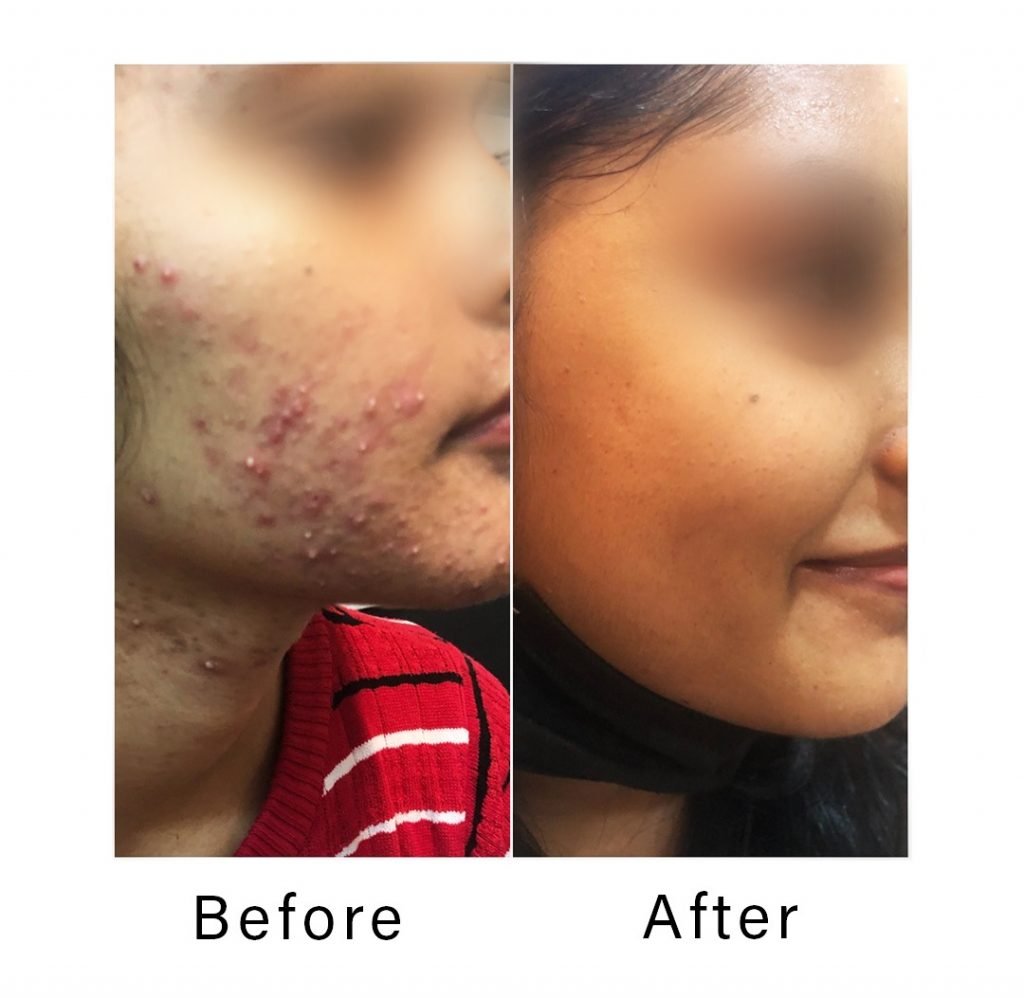The one thing that anyone would hate to have before dates, parties, or work presentations is acne. Acne is inevitable and everyone experiences it at least once in their lifetime. Acne mostly shows when hair follicles, pores on your skin get clogged by oil and dead skin cells resulting in the formation of comedones. This also leads to the growth of bacteria that may cause inflammation and red bumps.
Like most skin problems acne can be gentle, medium, or difficult. In difficult cases it can cause painful, pus-filled bumps these are called nodules or cysts. While medium mostly causes red bumps and pus-filled pimples. Gentle acne leads to whiteheads or blackheads.
Acne leaves a light red or brown mark which heals up and clears on its own. However, difficult acne which is cystic in nature leaves permanent marks or scars as it heals. This scarring is mainly because people tend to touch and squeeze the acne while it calls for treatment and healing.
Acne scars are a common condition faced by most people.
Acne scars are depressions that may be shallow, narrow, mottled, narrow, and rolling in nature. They may be the same color as the skin or be pink or light brown in appearance.
Flat scars with shallow depression, that mostly appear at the top layer of the skin are atrophic scars. They are mostly the result of difficult-to-deal with acne which is cystic in nature. The following can be categorized as atrophic scars:

Treatment for atrophic scars:
These scars may be boxcar, ice pick, and rolling scars. They are dealt with stage-wise treatment. The first stage takes care of the depth reduction of the scar to even out the skin’s top layer.
This treatment is done by a certified dermatologist in their clinic. These treatments may include:
Chemical peels: An acid peel (mostly glycolic or salicylic) that would shed the outer layer of the skin. This is usually not advised for very deep scars.
Dermabrasion: This treatment is used for boxcars to make them dull. The tool used in this treatment works like sandpaper to skin. This treatment requires a number of sittings as per the need and type of scar.
Dermal fillers: Injectable substances that can are usually hyaluronic acid and calcium hydroxyl apatite help in improving the look of the skin
Laser therapy: These are collagen booster treatments that stimulate the outer skin and improves the collagen production of the inner skin. They use heat and high-energy lights for the same.
Micro needling: To reduce the depth of the scar, very small injuries are made using needles over the scarred skin to from areas of healing that lead to the production of collagen.
This is a vital step as it may avoid any discoloration which is a result of the scars. The skincare practitioner may ask you to undergo:
Apart from this home care in the form of topical over-the-counter (OTC) retinoids can be used to avoid and remove scars and pigmentation. It is not recommended to use an at-home chemical peel as the may lead to potential damage to the skin.
Treatment for hypertrophic and keloid scars: This treatment focuses on decreasing the height of the scar and making the skin appear smooth and soft.
Dermatologist treatments: As a dermatologist, we advise one or more treatments, such as:
Apart from this home treatment needs to be done based on skin type and prescriptions given by the skincare provider.
Treatment for post-inflammatory hyperpigmentation: Mostly take care by sun protection of the skin proper sun care. This too can be treated with:
Consult an expert dermatologist for all your acne related queries & treatment.
Copyright © 2021 | Kiran’s Clinic | All rights reserved.
Designed and Developed by HM Ad-World Pvt. Ltd.